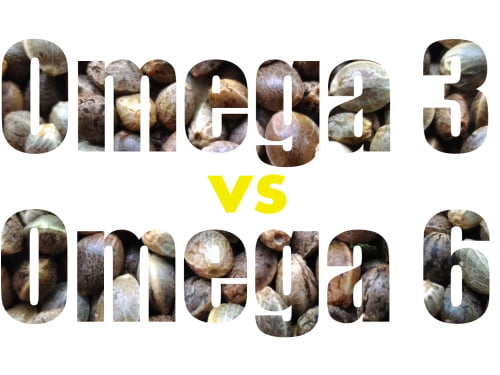For years, omega-6 fats have been painted as the “bad guys” and omega-3s as the heroes. The reality is far more nuanced. Both are essential fatty acids your body needs—but in the right amounts and forms. Here’s a clear, science-based look at how omega-3 and omega-6 work, where they come from, and what the latest research actually shows.
Key Takeaways
-
You need both omega-3 and omega-6; the body can’t make them.
-
Omega-3s (EPA & DHA) and omega-6s (especially linoleic acid, LA) play distinct, complementary roles.
-
New pooled analyses link higher blood LA with lower risks of cardiovascular disease and type 2 diabetes.
-
The goal isn’t “omega-6 bad, omega-3 good”—it’s maintaining adequate intakes of each, especially EPA & DHA.
Omega-3s 101: ALA, EPA, DHA
What they are
-
ALA (alpha-linolenic acid) – 18 carbons; plant-based (flax, chia, walnuts); must be converted to EPA/DHA (conversion is inefficient).
-
EPA (eicosapentaenoic acid) – 20 carbons; marine sources (fatty fish, algal oil, krill).
-
DHA (docosahexaenoic acid) – 22 carbons; marine sources; highly concentrated in the brain and retina.
What they do
-
Structural support: EPA and DHA are built into cell membranes throughout the body.
-
Signaling: EPA generates eicosanoids that generally resolve inflammation, supporting heart and brain health.
-
Neuro support: DHA makes up ~8% of brain weight and is critical from infancy through aging for cognition and vision.
Practical tip
Because ALA conversion is poor, prioritize direct EPA+DHA from:
-
Fatty fish (e.g., salmon, mackerel, sardines)
-
Supplements (fish, algal, or krill oil)
Omega-6s 101: LA and AA
What they are
-
LA (linoleic acid) – the most abundant dietary omega-6 (vegetable oils, nuts, seeds); historically dubbed “vitamin F.”
-
AA (arachidonic acid) – made in small amounts from LA; also found in animal foods.
What they do
-
Energy & structure: LA is widely used for energy and membrane structure.
-
Signaling: Like EPA, AA produces eicosanoids—some are pro-inflammatory, others anti-inflammatory and pro-resolution. Biology is about balance, not a single “on/off” switch.
The misconception
Because modern diets are LA-rich, omega-6 has been blamed for “too much inflammation.” But:
-
Only a tiny fraction of LA converts to AA.
-
AA also yields beneficial mediators.
-
LA itself can be converted into anti-inflammatory molecules.
What the Latest Research Shows About Omega-6 (LA)
Cardiovascular disease
-
A pooled analysis of ~69,000 people (30 cohorts, 13 countries) found those in the highest LA decile had:
-
7% lower risk of any CVD
-
22% lower risk of CVD death
-
12% lower risk of ischemic stroke
compared with the lowest decile.
-
Type 2 diabetes
-
A meta-analysis of ~40,000 people (20 studies, 10 countries) reported those with the highest LA levels had a 35% lower risk of developing type 2 diabetes than those with the lowest levels.
Bottom line: Higher blood LA (omega-6) is associated with better, not worse, cardiometabolic outcomes in these large prospective datasets.
So… Is It About “Balance” or “Adequacy”?
It’s tempting to reduce the story to “omega-6 vs. omega-3.” But the evidence points to a different target:
-
Ensure adequate omega-3 EPA+DHA (most people fall short).
-
Don’t fear dietary LA; cutting omega-6 may backfire given its links to lower CVD and diabetes risk in observational research.
-
Think both/and, not either/or.
Practical Guidance
Get enough EPA + DHA
-
Eat fatty fish 2–3×/week or
-
Use a quality omega-3 supplement (fish, algal, or krill oil) supplying a meaningful EPA+DHA dose.
Keep sensible omega-6 sources
-
Use unrefined or minimally refined plant oils (e.g., sunflower, safflower, soybean, corn, grapeseed) in moderation alongside whole-food sources (nuts, seeds).
-
Focus on overall diet quality (more plants, seafood, legumes; fewer ultra-processed foods).
Measure, don’t guess
-
Consider an Omega-3 Index test to check red-blood-cell EPA+DHA; aim for ≥8%. Optimize intake and retest in ~3 months.
The Takeaway
Omega-3s remain essential for brain, eye, and heart health—keep those EPA and DHA intakes up. But omega-6, particularly linoleic acid, isn’t the villain. Large, well-conducted prospective studies associate higher LA with lower cardiovascular and diabetes risk. The smart strategy: eat and supplement to ensure you’re getting enough of both, with special attention to boosting EPA+DHA.




